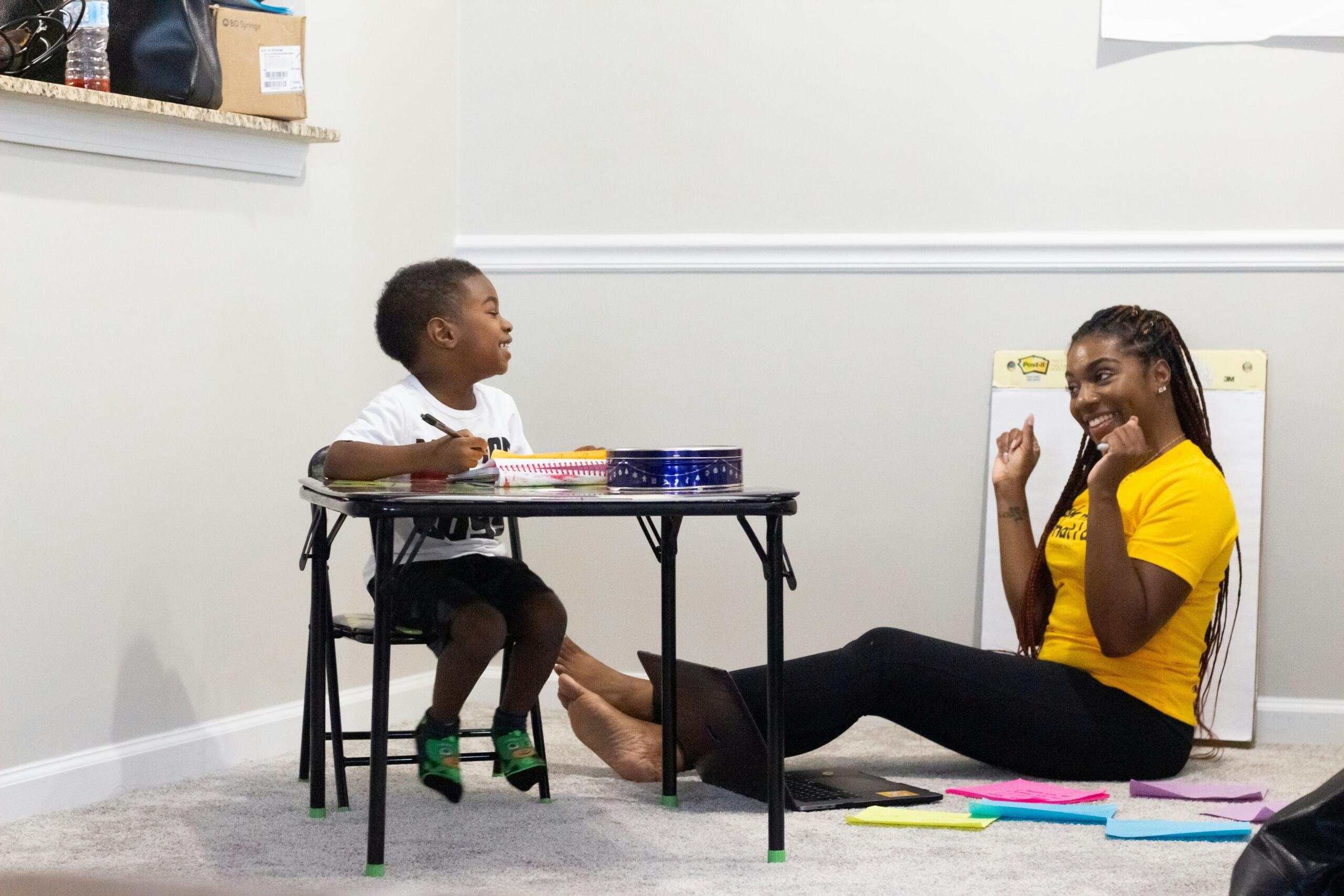One language sets you in a corridor for life. Two languages open every door along the way.
Frank Smith
Choosing the right language for your child’s learning is one of the most important decisions you can make as a parent. In South Africa, families often wonder whether their child should learn in their English home language or focus on a first additional language. This is because the way schools implement these choices has a real impact on comprehension, confidence, and academic success.
Thanks to the recent passing of the BELA Act, schools are now better equipped to support multilingual learning that encourages a balance between English and home languages. Understanding the difference between home language and first additional language helps parents, tutors, and learners make informed choices that strengthen both skills and identity. Let’s dive in.
Want to give private lessons?
Join the Superprof community and share your knowledge with inquiring and motivated students.
Why English Home Language Matters
English continues to dominate South African business, higher education, and global communication. For children learning in their English home language, it opens doors to a wide range of resources from textbooks to online learning platforms. It also gives them confidence in subjects that require precise vocabulary, such as science and mathematics. In schools across Johannesburg, Pretoria, and Cape Town, children who have a strong foundation in English home language often find it easier to transition into university courses or competitive workplaces.
At the same time, English fluency doesn’t mean children should leave their culture behind. Tutors who specialise in how to teach Afrikaans as a second language or provide support in English can help learners navigate this balance, ensuring that English becomes a tool rather than a barrier. In urban classrooms, English instruction often complements lessons in local languages, so children are exposed to both worlds.

The Power of First Additional Language Instruction
There’s a strong case for keeping the home language central to early learning. When children receive instruction in isiZulu, isiXhosa, Afrikaans, or another indigenous language, they often understand concepts faster and feel more confident participating in class. For instance, a skilled Zulu teacher in Durban can explain maths or science ideas in the child’s first language before gradually introducing English, making the learning journey smoother and less stressful.
When it comes to the South Africa BELA Act school implementation, schools are encouraged to maintain mother tongue instruction in the early grades. This approach gives learners the chance to build strong literacy skills, which research shows will later support English comprehension.
Knowing the difference between home language and first additional language also helps parents and tutors set realistic expectations. Remember that home language lessons focus on fluency and understanding, while first additional language lessons emphasise translation, vocabulary expansion, and bilingual communication.
Finding the Right Balance

The big question most indigenous language parents ask is when to introduce English as a medium for other subjects. Schools following the BELA Act often start by teaching literacy, maths, and other foundational skills in the home language during Grades 1 to 3. English is introduced gradually as a subject, and by Grade 4, learners may use both languages in the classroom. This transition respects the child’s home language while preparing them for the dominance of English in higher education and business.
This is where tutors play an important role. For example, a Zulu teacher might explain science concepts in isiZulu, then guide learners to rephrase their understanding in English. Similarly, tutors helping learners with Afrikaans as a second language can create interactive exercises that allow children to practise translation, vocabulary, and comprehension in real contexts. Parents in Soweto, Mamelodi, and Mitchells Plain often rely on these tutors to make the shift feel natural and confidence-building rather than stressful.
Tips for Tutors Supporting Language Transitions
Practical strategies always make a huge difference in bilingual learning which has been done for generations when it comes to teaching second languages. This can be in the form of scaffolding lessons which means starting with the home language and gradually layering the English which is particularly effective. Storytelling, songs, and local examples help learners engage while retaining comprehension in both languages.
Tutors can also encourage learners to keep a bilingual journal, where they write a paragraph in their home language and then translate it into English, for example. Teaching Afrikaans as a second language means combining vocabulary lists with cultural examples and storytelling to make lessons lively. By understanding the difference between home language and first additional language, tutors ensure that learners feel capable rather than overwhelmed.
Want to give private lessons?
Join the Superprof community and share your knowledge with inquiring and motivated students.
Helping Parents Make Informed Decisions
As a parent, you may be concerned about whether focusing on a home language will disadvantage your child in an English-dominated world. In other words, by supporting home language literacy, as a parent you will ultimately give your children the confidence to succeed academically while staying connected to their culture.
When it comes to the language of Instruction, the implementation of the BELA Act in South African schools makes it clear that early mother tongue instruction builds the foundation for later English proficiency.
Parents can also work with tutors to reinforce learning at home. For example, a Zulu teacher might suggest reading books in isiZulu or practising conversational exercises in both languages. Similarly, tutors supporting English home language lessons can encourage children to read newspapers, write short essays, or watch educational programmes in English. For parents looking for tips on how to teach Afrikaans as a second language, combining grammar practice with storytelling is an effective way to make the language relatable.
Local Examples and Community Resources
All across South Africa, schools and communities are embracing multilingual approaches. In Durban, libraries provide storybooks in isiZulu and English, while Cape Town after-school programmes combine English home language lessons with Afrikaans or isiXhosa activities. You may also find that community centres in Khayelitsha and Alexandra often host reading clubs or cultural activities where tutors can source materials and inspiration.
Universities like the University of KwaZulu-Natal and Stellenbosch University also provide textbooks, language guides, and research that supports both tutors and parents. Of course, online platforms, like Superprof, make it possible to connect your child with qualified tutors anywhere in the country, whether it’s a Zulu teacher in Johannesburg or someone specialising in teaching Afrikaans as a second language in Paarl.
Confidence, Culture, and Comprehension
Ultimately, the goal of language instruction is to build confident, capable learners. When children understand the difference between home language and first additional language, they can appreciate both languages as assets. Not only that, strong foundations in a home language when paired with English skills can help learners succeed academically while retaining pride in their heritage.
In practice, this means learners can switch seamlessly between languages. A child in Durban who learns science in isiZulu should later also be able explain the same concepts in English. An Afrikaans learner in Stellenbosch should be able to enjoy literature in their home language while writing the assignments in English. Tutors who understand these dynamics, whether teaching English home language or an indigenous language will play a key role in growing bilingualism in South Africa.

If you are an isiXhosa or Zulu teacher or know how to teach Afrikaans as a second language, Superprof is a good place for you to be seen.
Bringing the Home Language and Additional Languages Together
Choosing between English home language instruction and a first additional language doesn’t have to be stressful. When it comes to the language of Instruction, the South Africa BELA Act implementation ensures that South African schools can embrace multilingual learning while providing the support needed for smooth transitions.
The key is understanding the difference between home language and first additional language empowers parents, tutors, and learners to make informed choices.
Ultimately, by combining strong English instruction with home language support, children can thrive academically, develop bilingual skills, and maintain a connection to their culture. Today’s tutors who can fill the role of a first or second language teacher provide invaluable guidance. This is the road to diverse linguistic landscape where confidence, opportunity and pride set up the next generation of South Africans.
References
- The Basic Education Laws Amendment Act 32 of 2024, https://www.gov.za/documents/acts/basic-education-laws-amendment-act-32-2024-english-afrikaans-16-sep-2024
Want to give private lessons?
Join the Superprof community and share your knowledge with inquiring and motivated students.





